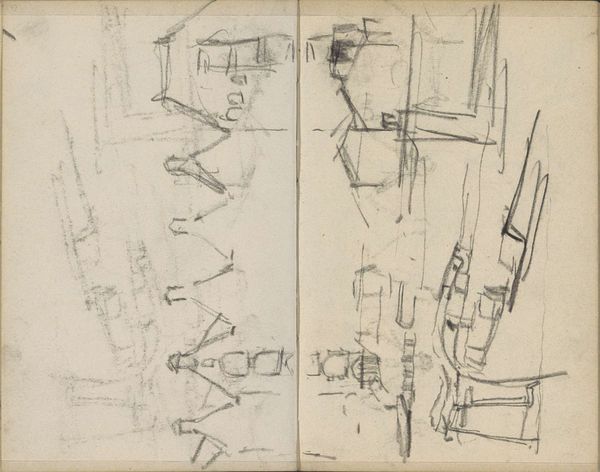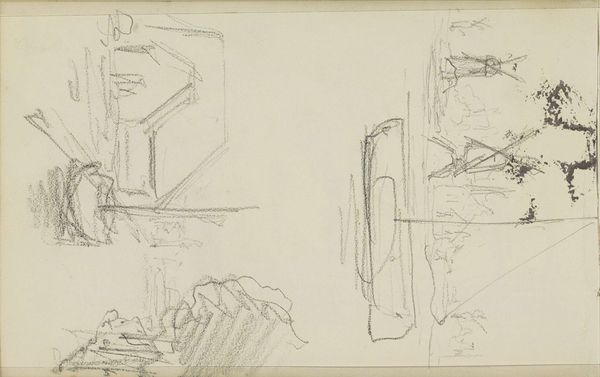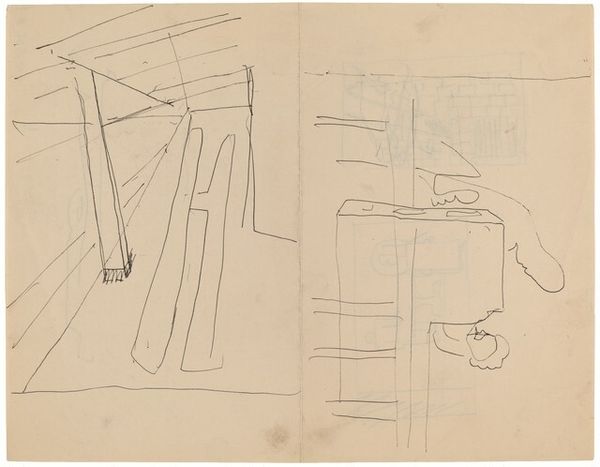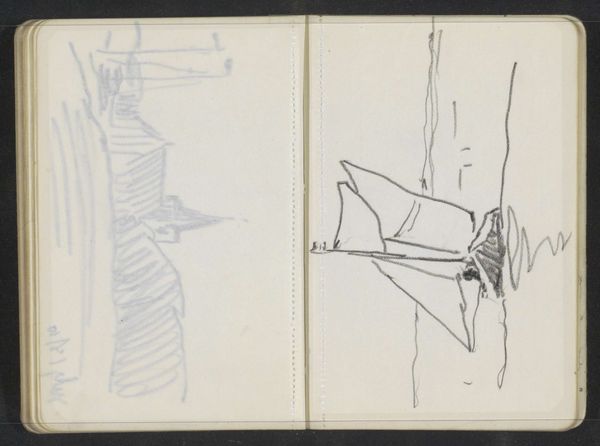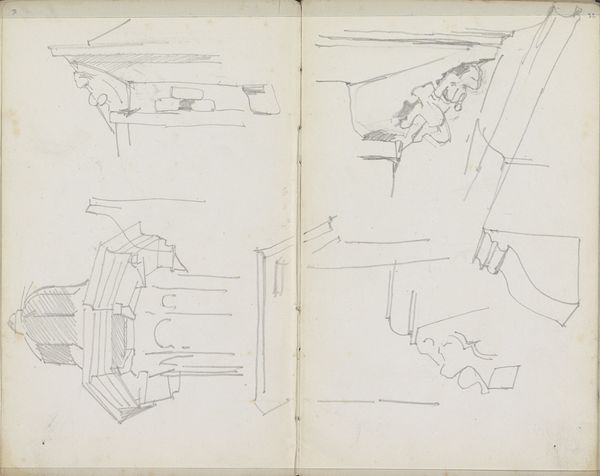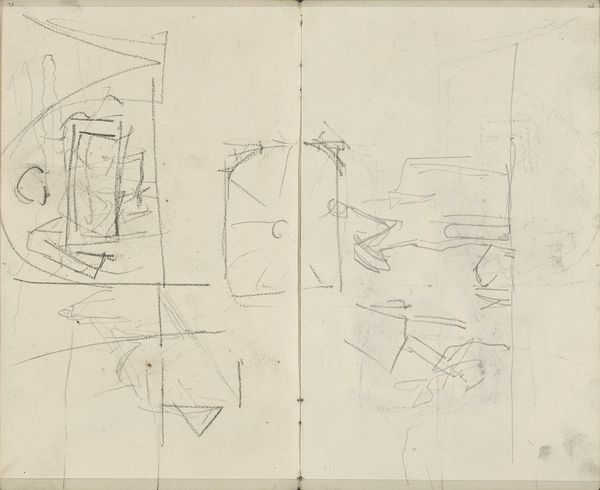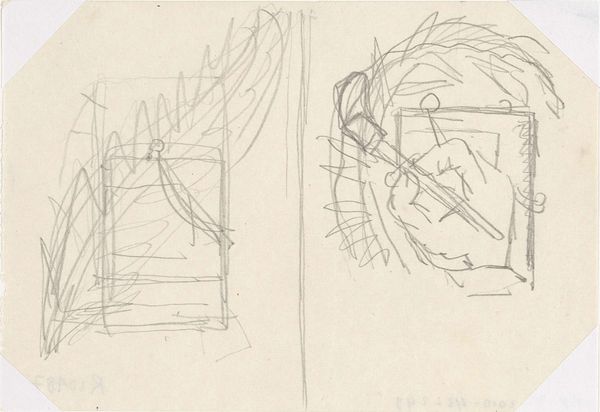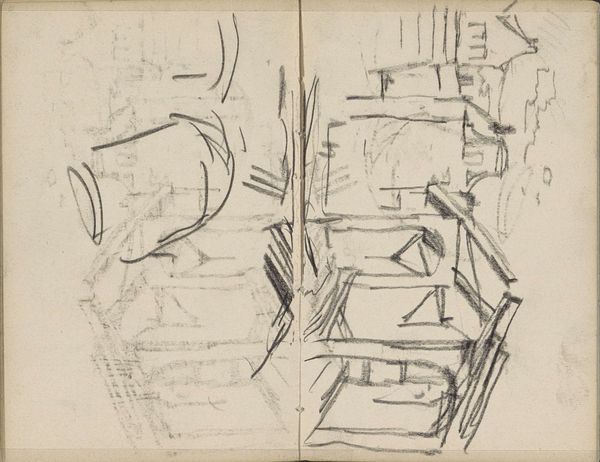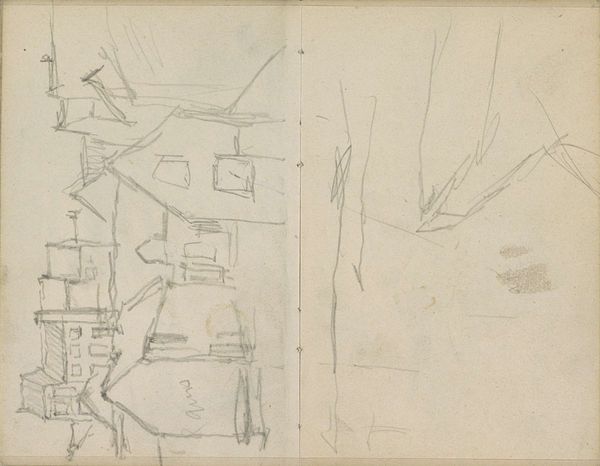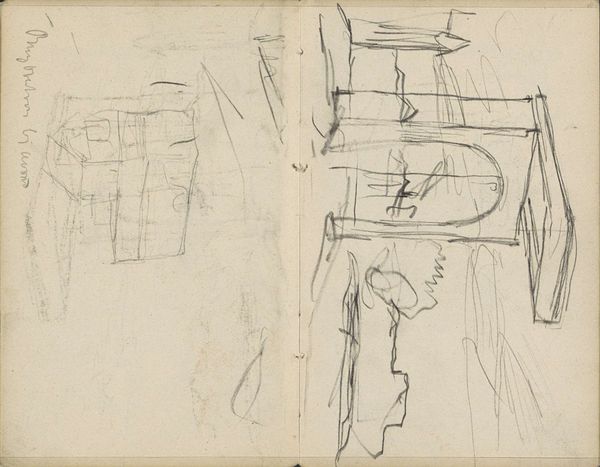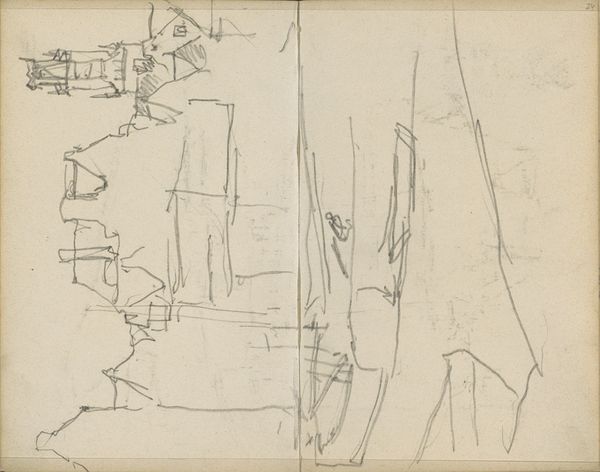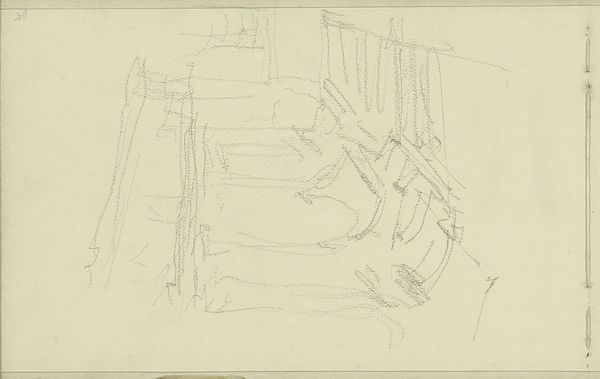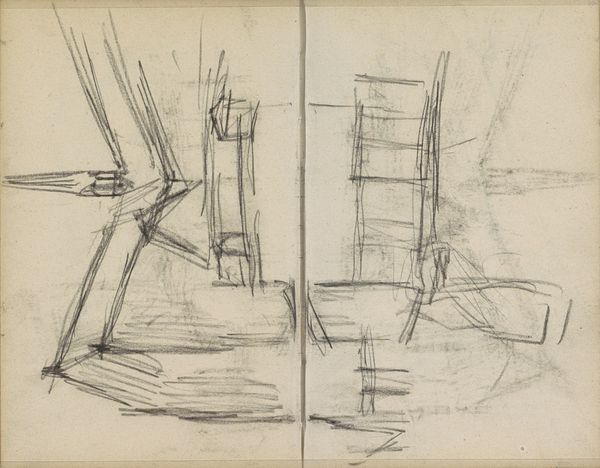
drawing, pencil, architecture
#
drawing
#
geometric
#
pencil
#
modernism
#
architecture
Dimensions: height 279 mm, width 221 mm
Copyright: Rijks Museum: Open Domain
Curator: Looking at this pencil drawing, “Studieblad met meubels en architectuur,” by Gerrit Willem Dijsselhof from around 1916, my immediate reaction is one of curiosity. It feels like a glimpse into the artist's design process, a page from a sketchbook maybe. Editor: Yes, there's something wonderfully raw and unrefined about it. The composition is quite fragmented. I find it almost melancholic in its simplicity. How do these seemingly unrelated sketches inform Dijsselhof's wider artistic and political landscape? Curator: It’s tempting to view these architectural and furniture studies through the lens of early modernism, a period wrestling with industrialisation and a longing for pre-industrial simplicity. The geometric forms may represent the push for functionalism, a rejection of overt ornamentation found in earlier movements, and reflect the avant-garde's turn towards abstraction. Editor: The motifs echo ideas about nature. Note the careful consideration of verticality, how the angularity seems to point up to a greater consciousness or meaning beyond the literal page, something intrinsic to human experience. I wonder if that was deliberate. It calls to mind ideas of home and purpose within social and economic turbulence. Curator: That's a valuable observation. Considering Dijsselhof's oeuvre, which incorporates decorative arts and interior design, these sketches may represent his holistic approach to creating environments that harmonize with a specific social vision. He isn’t simply designing objects. He’s crafting a lifestyle. Editor: And given that we’re looking at drawings of furniture, might these motifs of elevation echo social hierarchies or aspirational living for the intended inhabitants, filtered through Dijsselhof’s unique expression? Curator: Absolutely. The act of design is never politically neutral; it reflects the values and aspirations of a specific socio-economic class. What are your thoughts on the emotional resonance it evokes? Editor: Beyond melancholy, I now feel a sense of longing for connection between architecture, nature and daily living - almost a Utopian sensibility. It encourages us to examine our contemporary relationships with physical spaces, while giving these beautiful lines and symbols another moment to speak to us. Curator: I concur, considering the transformative role of design in reflecting not just functionality but broader socio-political possibilities. Editor: Well, it certainly encourages looking more closely at overlooked designs, for narratives of their time and potentially insights for our own.
Comments
No comments
Be the first to comment and join the conversation on the ultimate creative platform.
